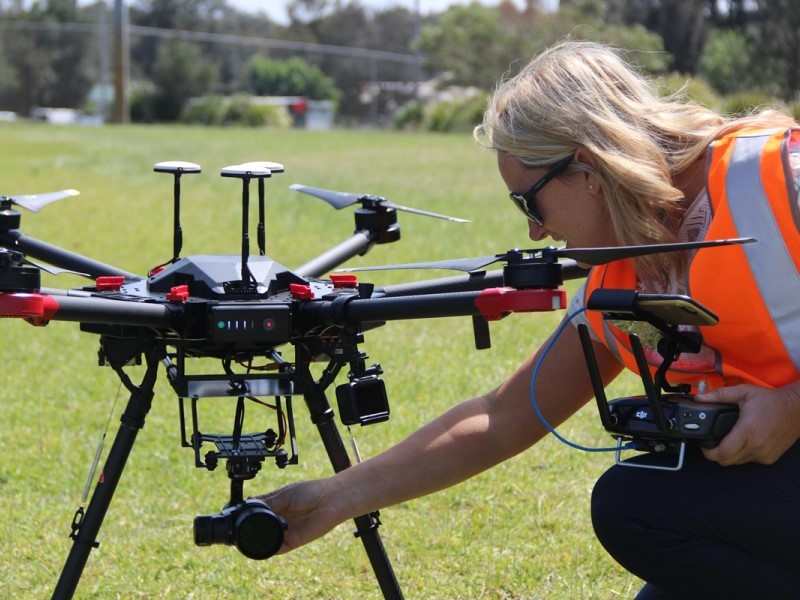The Northern Territory government is offering $100,000 in seed funding to establish a drone technology innovation cluster, a key initiative of its upcoming drone industry strategy.
While the cluster was announced on Sunday, the Territory government released its draft drone strategy for consultation on Wednesday. It includes a focus on attracting additional industry investment as well as boosting research and development activity.
Other initiatives to be introduced in the short-term, according to the draft strategy, are the establishment of pilot demonstrator programs, using drones to address industry challenges and facilitating the use of the Katherine Test Facility on Charles Darwin University’s R&D activities.

Digital and drone technologies were identified in the Territory Economic Reconstruction Commission’s final report, released in November 2020, as priorities in achieving the government’s target to grow the economy to $40 billion by 2030.
In particular, the strategy focuses on unmanned aerial vehicles, remotely piloted aircraft, and electric vertical take-off and landing vehicles, but seeks to bolster the entire value chain from upstream software development, research, and manufacturing to downstream operations and data analytics.
“Demand for drones is set to rapidly increase as the technology becomes more advanced, accessible and cost effective. Increased uptake of drones has the potential to enhance productivity and safety across many of the Territory’s key sectors such as mining, agriculture, natural resource management and tourism,” the strategy said.
While acknowledging that the territory’s “drone ecosystem is still in its infancy”, the Territory’s vast open landscapes and extreme climatic conditions makes it ideal for drone testing, according to the strategy.
Other advantages include proximity to Asian growth markets and the presence of “world-leading research capabilities” through Charles Darwin University’s Northern Australia Centre for Autonomous Systems.
The strategy aims to deliver “significant economic and employment opportunities, as well as improved service provision which could lead to reductions in isolation and inequality gaps across geographic regions”. 40 per cent of the territory population lives in regional or rural areas.
On Sunday the Territory Drone Innovation Challenge was launched calling for consortium proposals to establish the Drone Technology Innovation Cluster that will facilitate development of drone technology and associated industries.
According to the challenge guidelines, the state government will purchase the outcomes of the cluster “and will not take ownership of any IP developed by the consortium to deliver the outcomes”.
Among the capabilities the territory government would like in the state is drone manufacturing, maintenance and repair, new education and training opportunities, and the provision of drone-collected data storage, management, and analysis services.
This builds on advice contained in an initial directions paper on supporting the drone industry prepared by EY on behalf of the territory government.
Consortiums will be eligible if they include at least two Northern Territory businesses, a registered training organisation, and a research organisations. It must include a plan on how the centre will support the establishment of startups as well as the development and commercialisation of products developed at the centre.
Applications to the drone innovation challenge close on April 2 while consultation on the draft strategy will close on March 31.
A $100,000 challenge for the establishment of an angel investor network was also launched on Sunday. Previous Northern Territory innovation challenges have been held for the establishment of a Digital Games and Esports Development Centre.
Drone industry support is increasing across the country, with Air Services Australia on Monday announcing that it had selected a provider to deliver a Flight Information Management System that will help integrate drones into the existing air traffic management system.
Do you know more? Contact James Riley via Email.

